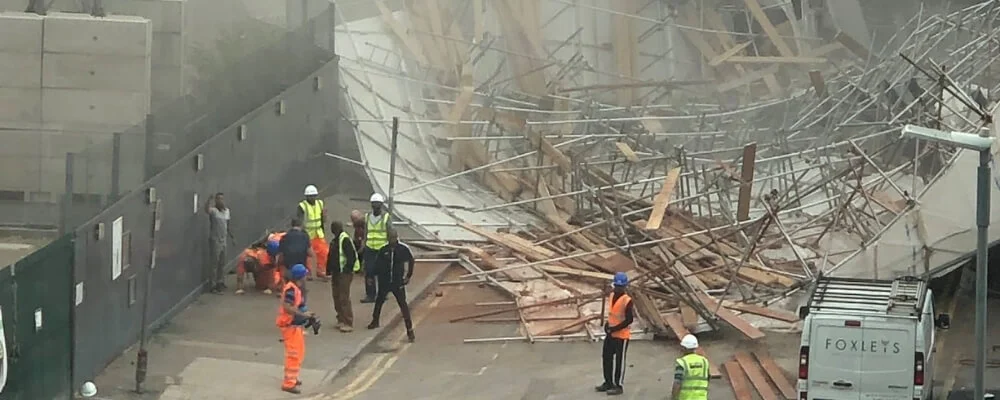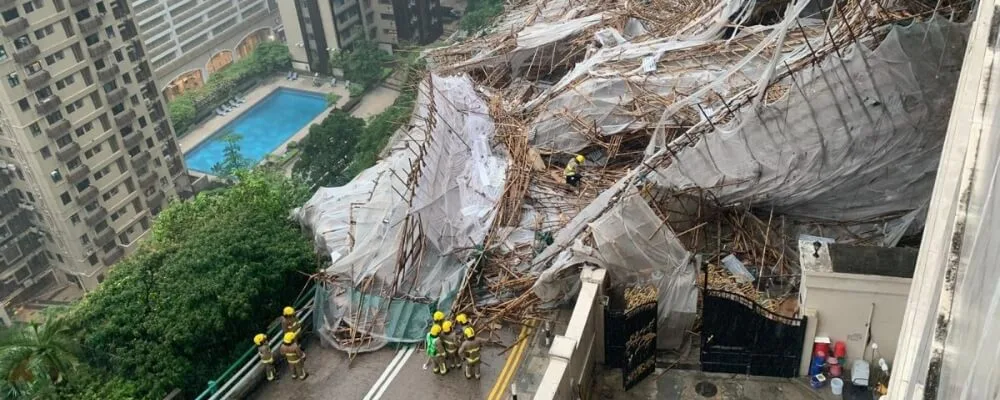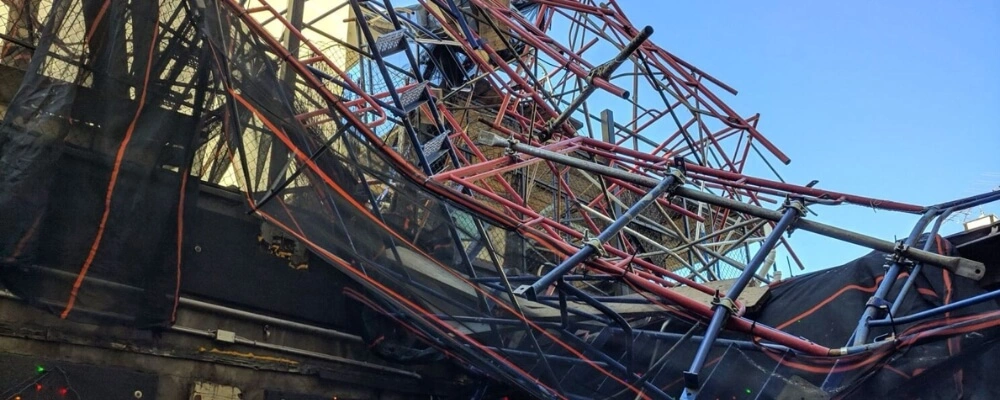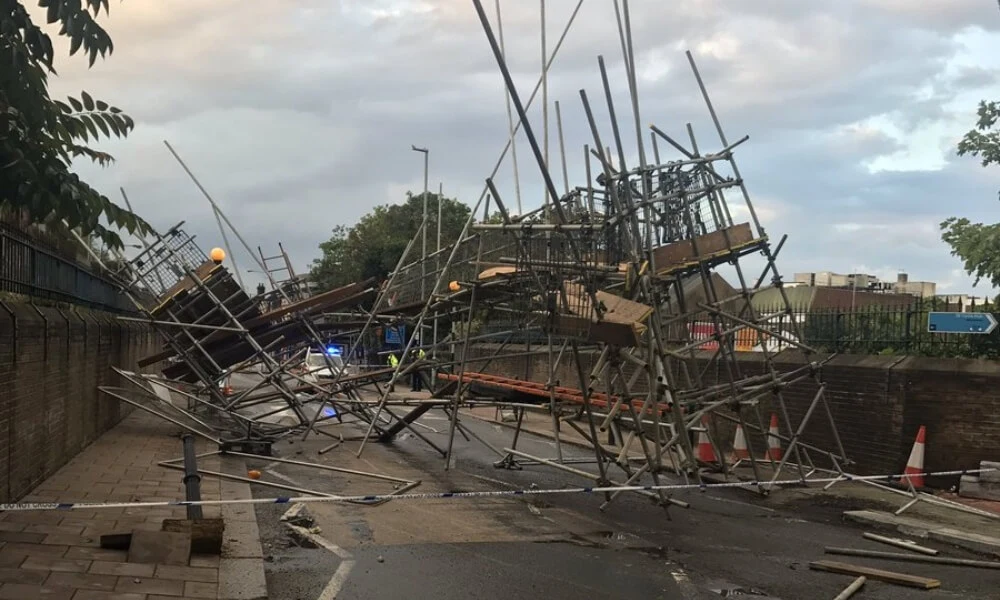Scaffolding is an integral part of many construction projects, offering an essential platform for workers to carry out their tasks at height. One commonly used type of scaffold is the independent tied scaffold. While these structures provide many benefits, including adaptability and multi-level access, they also come with inherent risks if not managed correctly. One serious hazard is the potential for these structures to collapse, resulting in severe accidents or even fatal injuries.
In this blog post, we will delve into the top 10 reasons why an independent tied scaffold might collapse. By understanding these risks, construction teams and managers can implement measures to prevent accidents, promoting a safer and more productive work environment. From factors like the lack of proper bracing and overloading work platforms to environmental conditions and human errors, this comprehensive guide sheds light on the importance of safety protocols in scaffold construction and usage. Read on to learn more about safeguarding your construction sites and ensuring the well-being of your workforce.
Independent Tied Scaffold
An Independent Tied Scaffold, sometimes called an independent scaffold, stands on its own and does not rely on the structure it is erected around for stability. Instead, it is typically supported by a system of poles (standards), cross braces, and ties that provide rigidity and balance.
The term “tied” in “independent tied scaffold” refers to the fact that this type of scaffold is tied to the structure it surrounds (like a building) using anchors or scaffold ties. These ties are used for additional stability and to prevent the scaffold from swaying or collapsing, but they do not bear the load of the scaffold.
This type of scaffold is commonly used in construction, as it allows workers to access multiple levels and sides of a building simultaneously. It provides platforms for workers and materials at various heights, enabling tasks such as bricklaying, painting, and plastering to be performed efficiently. However, as discussed, it requires careful design, erection, and maintenance to prevent potential accidents or collapses.

Reasons an Independent Tied Scaffold Might Collapse
As the name suggests, an independent tied scaffold is a type of scaffolding that is not connected to the structure it is built on. This makes it more susceptible to tipping over or collapsing if specific safety measures are not taken. Here are the top 10 reasons why an independent tied scaffold might collapse:
1. Lack of proper bracing
The dangers of independent tied scaffolds can be significantly reduced if proper bracing is used. Without proper bracing, an independent tied scaffold is at risk of collapse due to the weight of workers, tools and materials resting on it. Although bracing is meant to increase the strength of an independent tied scaffold, negligence or poor construction can easily lead to weakened structural integrity and result in accidents that could potentially be life-threatening.
2. Overloaded Work Platform
Overloaded work platforms can cause serious hazards for workers, especially on scaffolds. A large load raises the centre of gravity of a scaffold, and the scaffold’s structure may become unstable as it moves from side to side. This side-to-side motion could be further magnified by any movement of workers on the platform, increasing the chances of an untethered scaffold collapsing. To prevent this potentially disastrous situation, employers should always ensure loads distributed on an independent tied scaffold are within safe working limits.
3. Scaffold Built On Soft Ground Without Use Of Adequate Sole Board
When an independent tied scaffold is built on soft ground without an adequate sole board, it can cause instability and collapse. The sole board should be strong enough to support the weight of the scaffold and its load safely and securely. In addition, if any part of the scaffold rests on soil or other soft material that could shift or settle over time, this should be noted and addressed accordingly.

4. Scaffold Not Tied Adequately To The Building Structure
Careful attention to detail must ensure that any independent tied scaffold is safely set up and attached to the building. Suppose there is not enough consideration given to the attachment of the scaffold. In that case, it could cause a collapse due to sudden shifts in its structure or simply because it does not have enough support against solid forces. Workers assembling scaffolds need to be aware of how the attachments are made and take measures to strengthen them as much as necessary.
5. Standards Not Upright
One of the most important parts of a scaffold is its standards or vertical posts. If these are not placed upright and securely fixed to the ground or building structure, they can cause a collapse as the entire structure shifts and leans over time. Standards should always be checked for stability before work begins on an independently tied scaffold.
6. Standards Bent, Buckled Or Heavily Corroded
Along with standards not being placed upright, the condition of the scaffold’s standards should be checked for any signs of bending, buckling or heavy corrosion. Such issues can weaken a scaffold significantly and make it more prone to collapse. As such, all standards should be thoroughly inspected as part of routine safety checks before work begins on an independent tied scaffold.
7. High Winds And Weather Conditions
High winds and other extreme weather conditions can be a significant factor in the collapse of an independent tied scaffold. High winds can create large forces on a scaffold, pushing it over or lifting it off the ground entirely. To guard against this, additional bracing should be added to an independent tied scaffold if there is a risk of high winds or other extreme weather conditions.
8. Incorrect Couplers Used To Join Tubes Together
Couplers are used to join tubes together in a scaffold. The joints could open up and cause structural failure if they are not fitted correctly. To prevent this, employers must ensure that all couplers used on an independently tied scaffold meet the appropriate British Standards for construction and repair work.

9. Scaffold Struck By Mobile Plant Or Machinery
Mobile plants or machinery can cause a scaffold to shift or collapse if they come into contact with it. To avoid this, workers must be aware of the surrounding environment and take steps to protect the scaffold from possible impacts. This could involve installing barriers around the scaffold, ensuring the mobile plant is operated safely and supervised, or even suspending work when necessary.
10. Scaffold Erected By Incompetent Workers
Finally, an independent tied scaffold can collapse if incompetent workers erect it. Employers must ensure that all personnel erecting a scaffold are properly trained and competent. They should also be familiar with the relevant British Standards for working on scaffolds and any other health and safety regulations applicable to their work.
Conclusion
In conclusion, understanding and acknowledging the potential risks associated with independent tied scaffolds is crucial for maintaining safety at construction sites. Whether it’s inadequate bracing, overloading, improper construction, adverse weather conditions, or incompetent workers, these factors can contribute to the collapse of scaffolds, leading to serious or even fatal injuries.
By addressing these issues head-on, construction companies can create a safer work environment that minimizes risks and promotes productivity. Thus, continuous vigilance, regular inspections, adherence to established safety guidelines, and proper training for all workers involved are imperative to avoid scaffold collapses and secure the welfare of the workforce.

